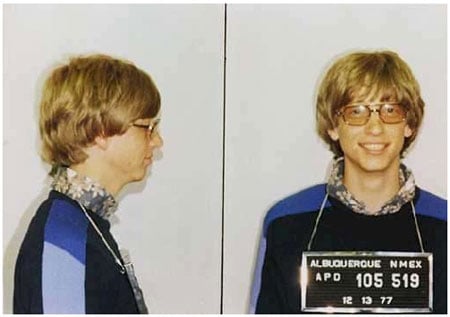This article is more than 1 year old
Bill Gates has gone, what's his legacy?
From hippy to hanger-on
This week marks another first in the 33-year history of Microsoft - life without Billg. The company and the man who co-founded it and rose to become the world's richest geek have parted ways. Bill Gates is no longer chief software architect and will be checking in only as company chairman.
Gates is hailed as the visionary who changed our lives by delivering on the vision of a PC in every home. Certainly, Gates and Microsoft came along at the right time. Ken Olson, former chairman and president of computing pioneer Digital Equipment Corp (DEC), is famed for saying in 1977 he saw no reason why anyone would want a computer in their home. It was also IBM's lack of interest in building software for PCs that gave Microsoft its first break.
Had it been left to companies like DEC and IBM, computing today would likely be a different, analogue, green-screen world.
The challenge of Gates, though, is to put him - and Microsoft - into context. The dictionary defines a visionary as someone “given to fanciful speculations and enthusiasms with little regard for what is actually possible” or “a person with unusual powers of foresight”.
Gates turned computing into a mass market by his focus on “experience” on a low-priced Intel box. He had the “vision” to see what Olson couldn’t when it came to PCs: that given the accessible and affordable tools ordinary people - not just those individuals staffing corporations or the engineering and scientific communities served by IBM and DEC - could do great things with computers. His success, though, turned him into another Olson, a man whose beliefs became contained and defined by the market his company had carved out.

Behold: your future
OK, so we all know Gates was fascinated with the idea of the computer from an early age. Before there was Microsoft, there was Trafo-data, which he started with Microsoft co-founder Paul Allen at high school to monitor traffic patterns across a roadway. The system used an Intel 8008 chip priced $360. The love affair with Intel, software and the power of what could be achieved was born.
The 11 hippies and loons that went on to start Microsoft got their big break when mighty IBM asked them to write the operating system, Microsoft Disk Operating System (MS-DOS), for its PC in 1981.
Here’s where one company’s lack of vision showed. That company? IBM. The giant left Microsoft free to license MS-DOS to others.
That happened as businesses began buying more and more PCs during the 1980s to digitize manual processes, and computing became affordable thanks to Intel-based PCs running Microsoft’s software. The 1980s saw Microsoft go from MS-DOS to the first version of Windows, an extension to DOS and a major step forward in terms of the way people interfaced with the PC.
It was the 1990s, though, that were the golden age for Microsoft in terms of consolidating its place on the desktop and in going beyond the PC and on to the server. Among the high points: Microsoft launched the first widely popular versions of Windows for the PC, version 3.0 in 1990 and Windows 95 in 1995. Both helped make the PC something for ordinary end users, with the latter something for consumers, not just business.
The decade also saw the launch of Microsoft’s first server operating system, as well as Windows NT, database, SQL Server, email system, Exchange and Outlook. There was also Office in 1989, when Microsoft bundled its separate word-processing and spreadsheet applications.
Here’s where the idea of Gates the visionary needs its first qualification. From office productivity suites, server operation systems and databases to email and collaboration, Microsoft was never first. But Gates’ famously obsessive, verging on rude, attention to detail meant that Microsoft delivered products that were generally better put together from the end-users’ perspective. They were easier to use. Oh, and by running on Intel-based hardware, affordable.
Security was another matter - this was before networks provided the kind of connectivity that meant bad people could abuse systems or data on Windows machines. Most PCs and servers-based software ran in isolated, secure islands. The focus therefore was on empowering the person sitting in front of the PC running Microsoft's software.
Completeness of product was also a joke in IT circles. For all Gates’ claimed nit-picking attention to detail and intolerance for incompetence, the standing joke was you waited for version 3.0 of the Microsoft product. Anything before that was considered unstable or sub-par on a features basis compared to the competition.
Banking on Windows NT
How could you take something like Windows NT, launched in 1993, seriously when it was rooted on the desktop and when the emphasis was on empowering the end user, not preventing bad people from doing the wrong thing, or on providing massive amounts of scale?
These early days were stories of failure for Microsoft’s newer software. The UK’s NatWesk Bank running more than 2,000 machines on a Windows NT branch network suffered a massive outage in the late 1990s. You wouldn’t get that if you’d been running Novell’s NetWare. Windows Exchange Server was notorious for needing a quick reboot every few days. Not so IBM's Lotus.
History will record, though, that for all the early stumbles and sniffy dismissals of the IT pros, Microsoft closed the gap. Office, Windows NT, SQL Server and Exchange Server matured and came from behind to take a number-one or two slot against IBM, Lotus, Oracle, Novell in addition to a range of dead and forgotten Unix vendors.
